Today I'm going to let you into a little secret of how to get a bromeliad to flower again. In fact one of the main items you need is a plastic bag. Intrigued? Well read on!
Guzmania, Aechmea and Vriesea bromeliads are favourite houseplants of mine. I love their brightly coloured inflorescences (flower spikes) especially at this time of year in the house. Furthermore they bring a little richness and exotica into a room.
This post may contain affiliate links, which means I may receive a small commission if you click on a link and purchase something that I have recommended. Clicking these links will not cost you any extra money, however, as an Amazon Associate, I earn from qualifying purchases which helps me keep this site going! Please check out my disclosure policy for more details.
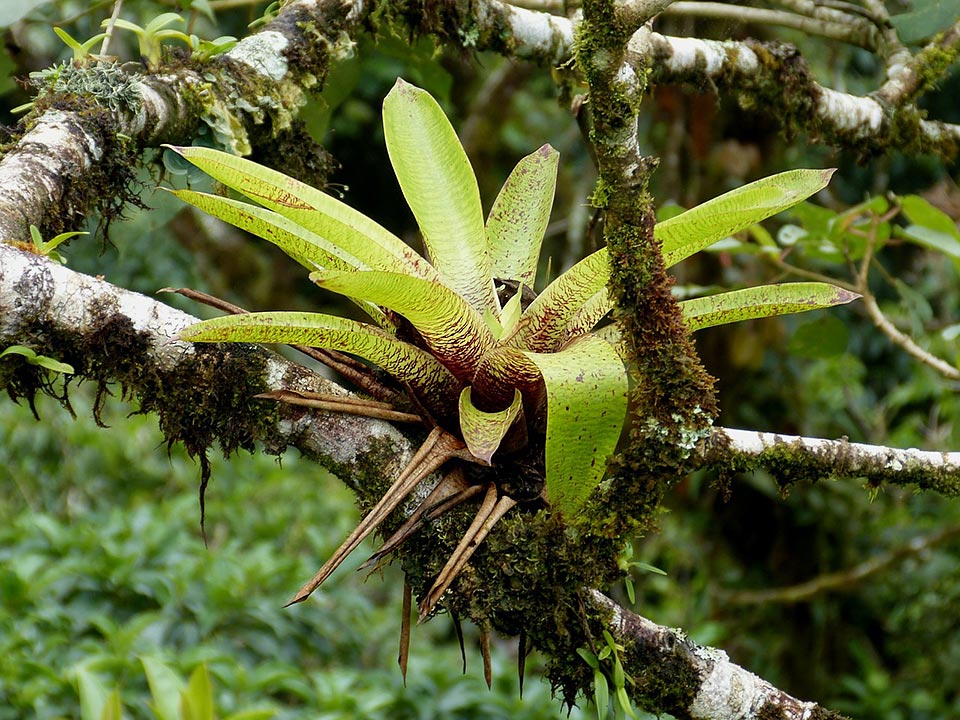
In their native habitat which is in the tropical rain forests of South America and the southern states of the USA, they are epiphytes. They cling to the branches of trees or lodge in rock crevices collecting rainwater in their funnels. While here in the northern hemisphere they are normally grown indoors in pots of compost or else mounted with wire onto wood and covered in sphagnum moss.
Bromeliads just like orchids will outlast a bunch of flowers any day - so are good value for money. They are resilient and very adaptable houseplants. Besides they have health benefits too. They give out oxygen during the day and absorb lots of nasty toxins around our homes during the night.
How do I get a bromeliad to flower again?
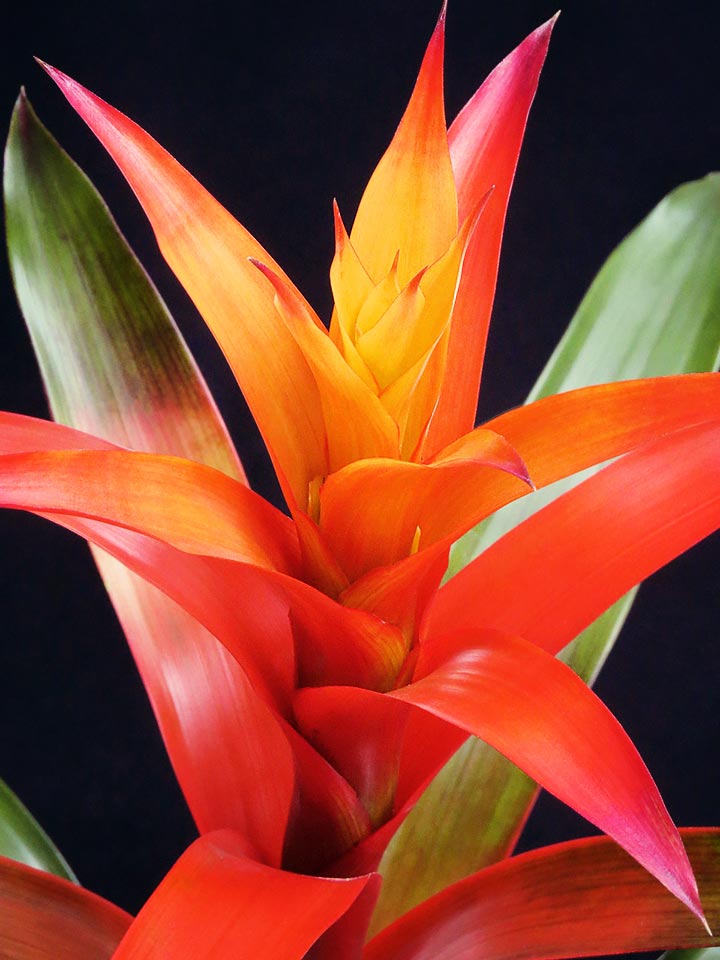
At the base of the rosette of leaves you'll see little offshoots growing. You call these pups. It's from these pups that you will get a bromeliad to flower from again. If they are not there don't worry as they will soon appear as the parent plant very slowly dies away.
Those of you who grow bromeliads outdoors have no problem getting the pups to flower. So how do I get a bromeliad to flower again here in the UK? Well, you have to be inventive!
In other words, you have to use the 'airtight plastic bag method'.
The bromeliad you purchased many, many months ago has now finished flowering. It has lost most of the colour from its inflorescences and you ask yourself
What do I do with it now?
Well firstly don't throw it away. Once your bromeliad has flowered for you it will NEVER flower again from that same rosette of leaves. It's because it's a monocarpic plant.
Monocarpic plants flower only once in their lifetime and then die.
Cultivating the Pups
Let those pups grow until they are at least a third or preferably half the size of the parent plant. The longer you leave the pups attached to the parent the quicker they will mature. It's at this stage that the pup has matured enough to be able to survive as an independent plant. You can either tease away each pup from the parent plant and repot. Or else leave all the pups to flower in the same pot. Just cut away the parent plant at the base.
If you have difficulty teasing the pup away from the parent plant use a sharp knife. Then let the cut dry for a day before repotting. It's best to grow these pups in a very free-draining compost like orchid compost. See the repotting section below for further details. Just don't plant the pups too deeply as they could rot. Best to plant them 10-20mm above the base of the plant,
They don't have a proper root system that absorbs nutrients. But what they do have are anchors or holdfasts. Pot these up in a pot similar in size to the one the parent plant was grown in.
It probably takes on average 12 months to reach the mature plant stage. Then you can force it into flower!
How to get a bromeliad to flower ... the air tight plastic bag method
- A mature bromeliad pup not in flower.
- One clear plastic bag that has no air holes in it. (Garden centres or pet stores that have an aquatics department will normally have large clear bags. Ask nicely and they might let you have one).
- Some ripe fruit like an apple, kiwi or banana.
I wish you could see the looks on peoples faces when I tell them what tools are required. It always brings a smile to my face and sometimes they don't even believe me at first.
Nurturing Your Bromeliad
Feeding
They only require 1/4 or 1/3 strength of balanced fertilizer during Spring and Summer months.
Add this feed each month into a spray bottle mixed with water.
Mist the whole plant rather than pouring feed into the funnel or around the roots.
They don't absorb any nutrients from roots. In their natural habitat, the roots of nearly all bromeliads just anchor the plant onto the tree.
Avoid high nitrogen feeds as they elongate the leaves.
But there's an easy way to feed bromeliads!
Since Bromeliads grow in conditions similar to the ones required for orchids it's best to feed them with orchid food.
The best feed for Bromeliads is Growth Technology Orchid Myst (affiliate link). It contains a low level of nutrition which is perfect for Bromeliads. You just spray the feed over the leaves of the bromeliad.
Watering
You keep their funnels/vases in the centre of the rosette of leaves filled with water during Spring, Summer, and Autumn months.
While during the winter you keep the funnel dry but add a little water around the compost so that it doesn't dry out completely.
Change the water in the funnel every so often to prevent water stagnation and a build-up of bacteria.
When watering let the water spill over the vase so that it moistens the compost as well. Soft water or rainwater is best.
Don't water again until the top surface of the compost is dry to the touch. Too much water around the roots will encourage root rot, especially during the winter.
Temperature and Humidity
Bromeliads grow best at 55°F but can take shot periods less than this. They love to have their foliage misted especially if temperatures exceed 85°F. The plants love hot humid air rather than hot dry air. Misting is also beneficial during the winter months when its funnel/vase is kept dry.
Light Levels
They don't mind growing in shadier areas around the home but filtered light is best.
Their leaves will experience leaf burn if exposed to too much direct light.
Repotting Bromeliads
Bromeliads are just like orchids as in their native habitat their roots cling to trees. Therefore an ideal compost to put in the pot is orchid compost (affiliate link).
However, some growers prefer a 50:50 mix of both orchid compost and houseplant compost (affiliate link) and they add finely chopped up pieces of sphagnum moss and perlite. There's a specialist bromeliad compost available online that is ready mixed with these ingredients (affiliate link).
Attaching Bromeliads To Driftwood
Some people like to attach their bromeliads to wood to make indoor bromeliad trees, rather than growing them in pots of compost.
-
- Just find a suitable decorative branch, a large piece of decorative cork, or driftwood (affiliate link).
-
- Wash any compost off the roots.
-
- Cover the whole root system with moist sphagnum moss (affiliate link).
-
- Wrap the sphagnum moss and roots with translucent thread (affiliate link) or fishing line a number of times until the plant is secure and tie with a double knot.
-
- Then tie this around the driftwood and tie off with a double knot.
-
- Water and feed the same as if it was a bromeliad growing in a pot.
If you are interested in houseplant care I have published some more blog posts:
How to care for Calathea crocata Tassmania Blooms – The Eternal Flame flower.
How to care for an Oncidesa Sweet Sugar Orchid - the dancing lady orchid
How do I look after a Zygopetalum Orchid?


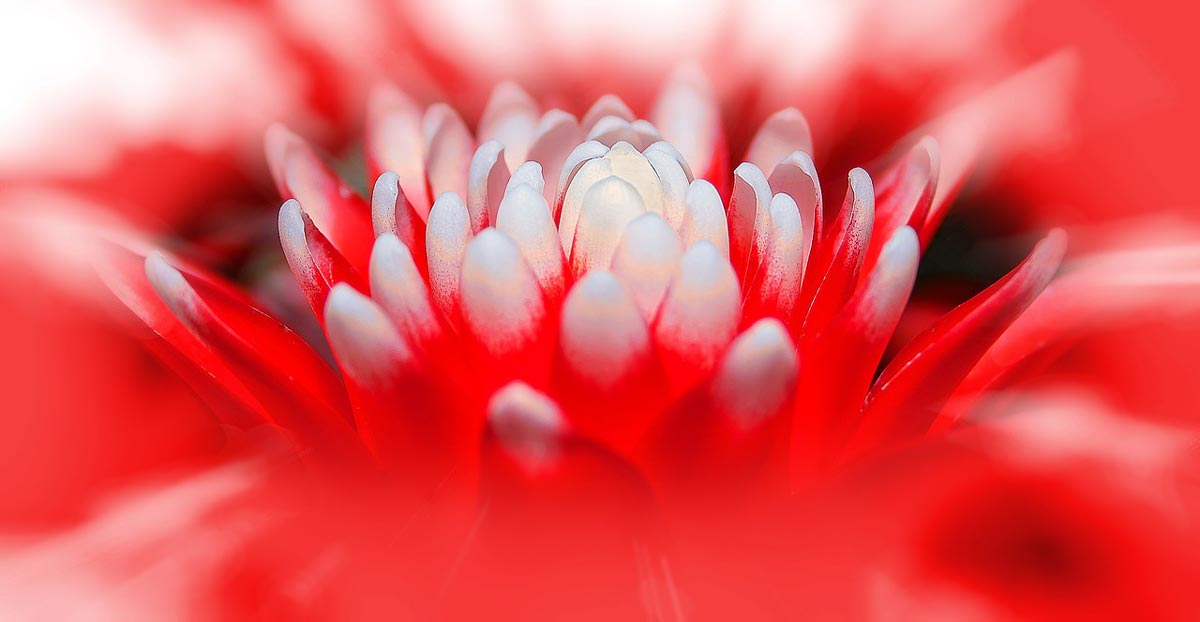

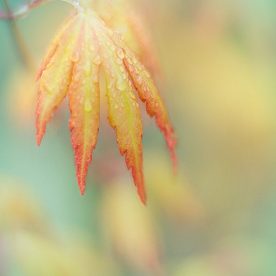
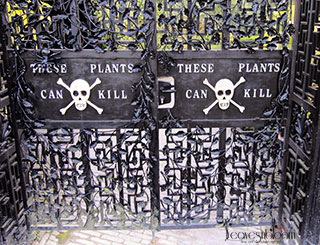
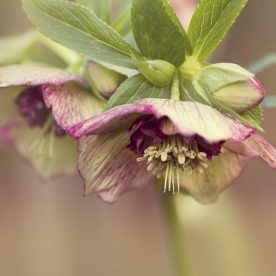

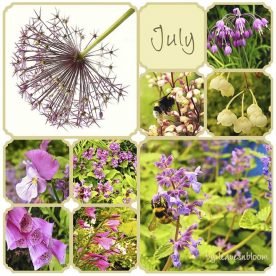
Rosey
Hi Rosie,
Ha ha. Yes, I remember and appreciated that delightful comment you left. By the way, my Bromeliad is still alive. It looks like it could use some TLC, though.
I think most people buy Bromeliads when they are in flower and then they never know how to care for them This article is an invaluable resoure. I will put a link to this on my site! Thanks,
Rosey
Autumn Belle
Bromeliads are very popular during the Chinese New Year season as they are regarded as auspicious plants. Some species, like the one you pictured here are nicknamed 'pineapple' flower because pineapple is an auspicious word in Chinese.
I use the apple peel method on my pineapple(also a bromeliad) plants which I propagated from store bought ones. It didn't occur to me that I can use this method on other bromeliads too. Definitely very useful info for me 😉
Meredehuit ♥
Such good information you share… thank you, thank you!
Catherine@AGardenerinProgress
What a great post. I've never tried growing bromeliads, but do love their tropical look. It might be a fun one to try learning about once the weather changes and there's not much gardening to be done outside.
One
Your Bromeliads are lovely! I bought a few of these several years ago and they all died. Now I know. They are not even ground plants to begin with.
lotusleaf
Hi Rosie! Thanks for your very informative post.My bromeliads grow outdoors. I have tied up some to some of my trees where they seem quite happy. But some of them don't flower.
Curbstone Valley Farm
I think I might have contributed to the death of the odd bromeliad or two. Unlike FG, I don't grow them outdoors here, but have received the odd one or two as gifts, as houseplants. They seem to be cursed much like any orchids that find their way into my house, however, if I ever receive another, I'll be sure to use these tips to try to keep the poor thing going. Don't quite understand how my thumbs are green outdoors, and so very brown indoors 😛
Ami
Rosie: Great and helpful post! Even I can grow bromeliad outdoors in my south florida garden, I might try your method to force the flowers too! thanks!
Priscilla
Amazing! I have always admired Bromeliads along with Orchids, and everything Tropical. I wish I had the right climate to grow them. Next time I'm going to get Bromeliad for indoors, thanks for the advice. Have a great week! 🙂
Caroline Gill
WHAT an amazing post, Rosie. I was glad to learn about these colourful plants as I often see them in the Ninfarium (interesting word!) at Aberglasney, the 'hidden garden lost in time' not far away from us here in South Wales.
AaronVFT
Bromeliads flower very very frequently here without any help. Must be the climate. On the other hand, we throw temperate bulbs into the fridge for 3 months to stimulate dormancy.
Bernie
A fantastic read, Rosie! I never knew it was all that hard to get the pups to flower … and I've never heard of the 'ripe fruit in a bag' method of encouraging flowering. Here they just seem to flower all on their own. Loved the idea of attaching broms to bamboo cames!
scottweberpdx
Great, informative post…and lovely plants!
Ewa
so much information, this is great!!!
Andrea
I remember this topic has been discussed also in the past, but i forgot whose blog, maybe Autumn Belle's for the pineapple. As a postharvest physiologist as a past profession, ethylene is the most important gas we know, because it is the ripening hormone. I remember letting students to experiment on which peels, how long, style, etc, etc, to mix for other fruits to ripen. There are also leaves which are ripening enhancers, meaning they produce more ethylene when senescing. BTW, it is also the senescing hormone, because ripening is the start of senescence. So if you put more, you will also induce the plant to die. So the balance is important. Or the lenght of time the plant is inside that plastic enclosure is important too, because lengthening it will induce a modified atmosphere and gas imbalance for it to photosynthesize and respire.
BTW, there are fruits which are normally producing more C2H4 or ethylene, e.g. sapota (Achras sapota), squash, bananas, tomatoes. Apple is not high producer. Chopping the peel will also help as bruising enhance C2H4 production.
amatterofhowyouseeit.com
Gorgeous colors – these are beautiful plants and you are a wealth of information Rosie!
kanak7
Rosie, I haven't really looked after my bromeliads the way they are supposed to. Thank you for posting this article. I'd like to try out the plastic bag method for one variety that didn't flower after a splendid show the year before.
The colours in this post are stunning!
Autumn Belle
Rosie, the link to my post about using apple peels to induce flowering in pineapples is here:
http://www.mynicegarden.com/2009/03/pineapples.html
I have updated my post to include your link too.
Melanie
I've never grown a Bromeliad before now I'm inspired to try and get it too reflower too. Thanks for your excellent tutorial on how to do this Rosie. I would have loved to have been at that trade show in Germany.
noel
aloha rosie,
what a wonderful and comprehensive how to on these beautiful plants…they are wonderful to have especially indoors, thanks for sharing these hints 🙂
Floridagirl
Yes, very helpful hints, Rosie! I will have to print this out as I've been hankerin' to bring a pup or two indoors, but am afraid I might kill them. Like Curbstone mentioned, I suffer from Indoor Brown Thumb as well. It's just so stinkin' dry in the house, which of course is a good thing, as mold and mildew could be a big problem in Florida if it were humid in here.
By the way, I too have tried bananas to force my broms to bloom. But I go out the next morning–without fail–and the raccoons have uprooted the broms and left no trace of bananas. When it comes to the outdoors, I'll just leave it to nature and let them bloom on cue.
Edith Hope
Dear Rosie, I think it must be at least twenty years ago that I last grew an indoor plant. I have given up on them.
You clearly have an amazing knowledge of these plants and the information you give here is incredibly detailed and informative. If I were to try again, I am sure that your instructions would guide me through the process perfectly.
However, at present, indoor plants are to be admired in the houses of others…..yours, no doubt would be amazing!!
Gloria, Dakota Garden
Rosie, what a wonderful and very timely post for me! A friend gave me what I now know is a Bromeliad pup – I had no idea how to grow them! I am excited to see if I can help it bloom! Thank You –
lisa
Great info, and wonderful shots. Thank you for sharing.
maiaT
Rosie, your picture with the flowers hanging from the ceiling is amazing.
That was an interesting reading about how to bring bromeliad to re-bloom.
You know so many things about flower, I always learn something new from you.
I've thrown away mine, I don't think I could wait a year and a half for eventual to bring it to bloom again.
NatureFootstep
nice image.
kilbournegrove
Thanks Rosie, something I can pass on to my customers at the flower shop.
hazeltree
intriguing!
Anna
A most interesting post Rosie. I seem to kill off most houseplants as soon as I look at them but really envy folk who have the knack of getting theirs to flourish.
gardenwalkgardentalk.com
I can not seem to get a comment to post. Try again.
This is the first time I got a chance to comment after picking the post, But this is really good information. I liked the trick using the ethylene gas. Makes sense. I will hang on to the instructions because someone may ask me how to train a 'pup' someday. I did it with an orchid once, so I will try the bromeliad.
meemsnyc
That is such an awesome tip!
Miranda Bell
A very enlightening posting Rosie – thankyou – I can see all the things I was doing wrong!!! I must admit I'm not great with houseplants – much better with those that grow in the great outdoors! Have a good week Miranda x
Melanie
Rosie – Thanks for reminding me about this excellent blog post of yours. I linked to it from my comments and will link to it from my post too.